A-Z of garage rock
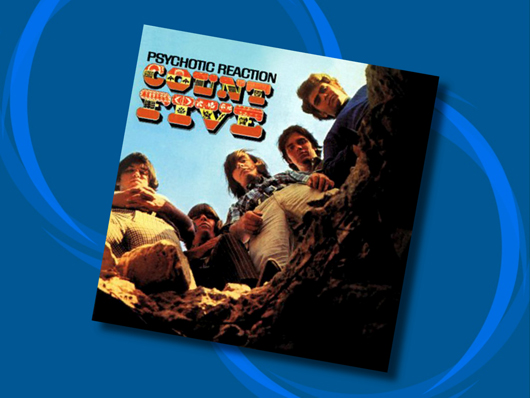
Anglophiles
A is for... Anglophiles
Thanks to The Beatles invasion of America in 1964 anything that looked, sounded or smelled even remotely British was big news. Some US garage bands jumped on the bandwagon, or in the case of the Count Five a double-decker bus, adding some quaint Britishness to their act in varying degrees.
This was illustrated perfectly when The Sir Douglas Quintet, featuring Texan legend Doug Sahm, performed its 1965 classic She’s About A Mover on the TV show Hullabaloo! Dig that authentic English castle and the beautiful girl dressed in a suit of armour who is, we assume ironically, not moving during the song. Good heavens!
A is also for... Archive
Classic and obscure garage rock is easy to get hold of these days thanks to record companies like Ace, Rhino, Double Crown and Bomp! There’s also Garage Hangover, a killer resource site with enough obscure sounds, from just about every country you can think of, to keep any garage geek buzzing.
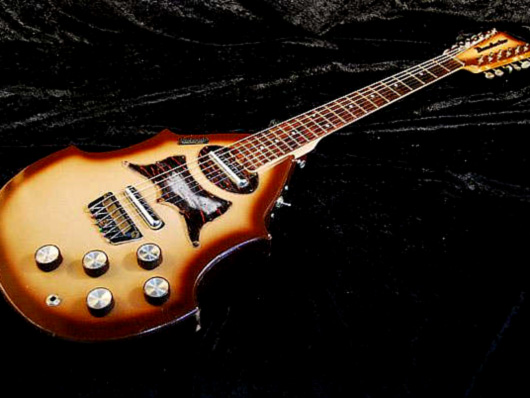
Bellzouki
B is for... Bellzouki
The Danelectro ‘Vinnie Bell’ Bellzouki was a 12-string electric guitar produced in the USA from 1961 to 1969. The idea for the wacky-looking beast came from session guitarist Vinnie Bell who wanted a 12-string electric guitar based on his traditional Greek bouzouki.
The Bellzouki was a hit with garage band alumni like late great Count Five guitarist John ‘Sean’ Byrne, who played a single-pickup model 7010, and future-Mountain guitar slinger Leslie West who used the two-pickup model 7020 onstage with The Vagrants. You can find out more about the Danelectro Bellzouki at the excellent Unique Guitar blog.
B is also for... Bass
Gut-crushingly deep bass guitar was the order of the day for most garage rock bands. Few thumped the bottom end harder than powerhouse Philip (Phil) Packham of British freakbeat band The Sorrows. His aggressive bassline on the band’s 1965 classic Take A Heart is an amp’s worst nightmare.
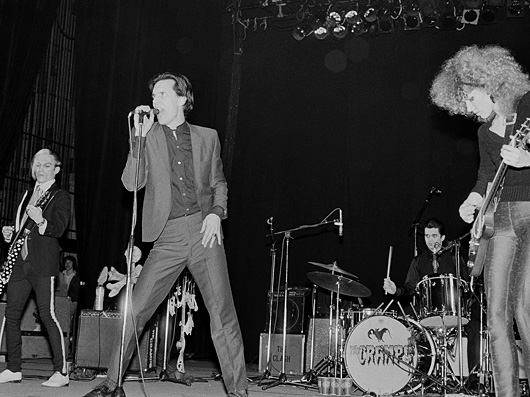
The Cramps
C is for... The Cramps
The greatest garage punk rock band of them all. Cramps frontman Lux Interior and guitarist Poison Ivy Rorschach were a walking, trash talking encyclopedia of obscure garage and rockabilly riffs. Pretty much everything The Cramps put out is essential but their first album Songs The Lord Taught Us (1980) is a garage punk masterpiece.
One of The Cramp’s greatest gigs was the free show they gave for the patients of the California State Mental Hospital in Napa in 1978. The event was filmed and later released on video. Lux sadly passed in 2009 and The Cramps were done. But man, they left behind a hell of a legacy.
C is also for... Crazy monikers!
C’mon, it was the '60s! It was all tight trousers, fuzz boxes and daft band names. Examples? How about Mouse & The Traps, The Strawberry Alarm Clock, The Chocolate Watch Band, The Electric Prunes, The Blues Magoos... Question Mark & the Mysterians! Makes ‘The Beatles’ sound ordinary by comparison.
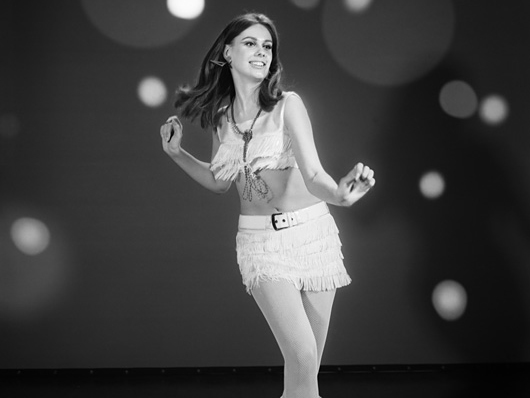
Dancing!
D is for... Dancing!
Go-Go dancing and garage bands went together like, well, one-hit wonders and cute girls who couldn’t actually dance that great. Practically every TV studio or movie clip you eyeball of a '60s garage band has some big-haired sex kitten in tight pants busting some wild moves in it.
A classic example is The Castaways performance of their seriously great Liar, Liar in the 1967 movie It’s A Bikini World. You gotta love the squares trying to be hip at the start of the clip. Oh, and how cool is that '50s silver sparkle finish Fender Precision bass?
D is also for... Detroit
While Motor City had its fair share of garage bands, it was the progression from garage rock to heavier sounds in the late '60s that makes the city an essential part of rock history. Bands like Iggy And The Stooges and the MC5 took the power of garage rock and amped it up a few notches, creating a punk prototype.
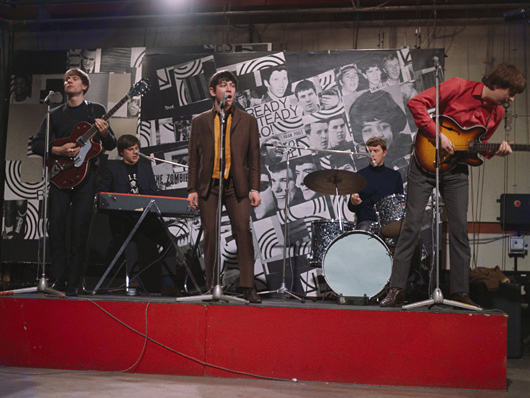
Early days
E is for... Early days
It’s ironic that the first wave of US garage bands were turned on by the blues of English bands like The Animals and The Yardbirds. Many American kids just didn’t know that the blues had originated from their own country and as a result, the English bands were essentially selling American culture back to American teenagers.
Happily, the upshot of all this was that black American blues artists began getting more recognition back home. The Rolling Stones made sure that their fans knew where their sound had come from. Of course, they also fired up the kids with the fuzz-tone explosion of (I Can’t Get No) Satisfaction. Yep, Mick, Keith and the boys did their bit.
E is also for... Epiphone
For kids on a budget the '60s solid-body Epiphone guitars and their stablemate, the Gibson Melody Maker, were easy-to-play, with slim necks and great pickups. The new Epiphone Worn 1966 Wilshire reissue captures the magic, and affordability, of the originals.
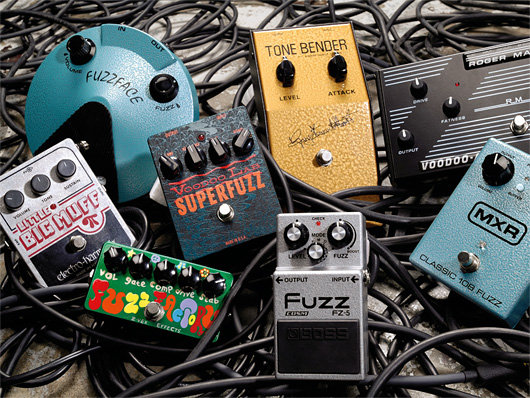
Fuzz!
F is for... Fuzz!
Fuzz is the essential element of garage rock. Fact. There are thousands of tracks we could use to demonstrate sick '60s fuzz. The Jack’s gloriously overwrought Gloomy Flower gives us another opportunity to dig out some wicked Japanese garage. The solo is a fuzzed-up feast.
There’s a fuzz pedal review round up on this site, but if you want this writer’s opinion the best fuzz pedal out there is the Retroman Lola made by Joe Wolf of Wisconsin, US. For $175 (plus shipping) you get The Yardbirds, Count Five and The Cramps in a box.
F is also for... Freakbeat
‘Freakbeat’ was a heavier sounding brand of garage that evolved in the UK of the mid-1960s. The Renegade’s 1966 blast through 13 Women is a great example of this heavier sound. The Creation’s Painter Man is another. Watch Eddie Phillips play his guitar with a violin bow. He did it before Jimmy Page!
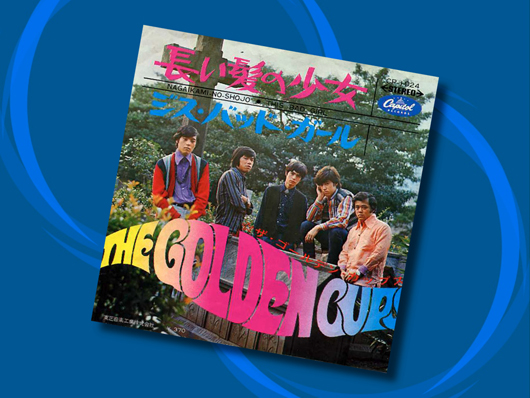
Group Sounds
G is for... Group Sounds
Just like in the US, kids in Japan moved on from their Eleki (electric) surf and instrumental guitar music to play rock ‘n’ roll inspired by The Beatles, The Stones and other British Invasion bands. A bunch of new groups like The Spiders, The Golden Cups, The Tigers, The Mops and The Carnabeats sprung up. The new wave of bands was described as Group Sounds.
Of course, the Japanese garage scene is still kicking ass with the likes of Guitar Wolf and The 5.6.7.8's (see 'Y') keeping the faithful rocking. If you want to learn more about Japanese garage music, and other genres, from any era visit the Nippop website.
G is also for... Germanium
Early fuzz pedals were driven by germanium transistors. Although they were less stable in higher temperatures, connoisseurs believe that these little pep pills produce the best fuzz-tone compared with later silicon based transistors. We’re sold on germanium too...
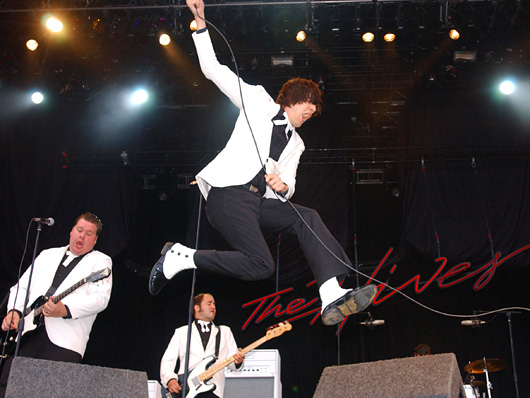
The Hives
H is for... The Hives
Behind the black suits and white ties Swedish band The Hives are a dyed-in-the-wool garage band. Like fellow amped up garage fans Rocket From The Crypt, The Hives enjoyed a burst of mainstream success, particularly after the release of their Your New Favourite Band LP in 2001.
Since then it’s been a bit quieter but they still have plenty of fans. Sadly, Rocket From The Crypt split in 2005, a decision many people hope they’ll reverse someday. They had the true spirit of garage punk rock running through them.
H is also for... Harmonica
The garage scene was full of great harmonica players. Count Five singer Kenn Ellner played some mean mouth organ blasts on the band’s Psychotic Reaction record. Mick Jagger of The Stones is no slouch on the harmonica either. Keith Relf of The Yardbirds was damn fine too.

Influence
I is for... Influence
The influence of the original garage scene can be felt whenever a kid picks up a guitar and beats out a tune. It was the punk ethic: get whatever gear you can afford, write a song and get it recorded even if you don’t have any money... you’ll work it out.
You can hear that attitude in contemporary bands like the Arctic Monkeys, The Strokes and whatever Pete Doherty’s working on at any given time. Every now and then people will ‘rediscover’ the Nugget era bands and remember to enjoy themselves when they’re making music... and step on a fuzz box.
I is also for... I’ll Make You Happy
I’ll Make You Happy is a song by Austin, Texas garage band The Ugly Beats. The band has an authentic '60s garage sound and some cracking tunes. Girl On The Brain has some killer fuzz guitar.
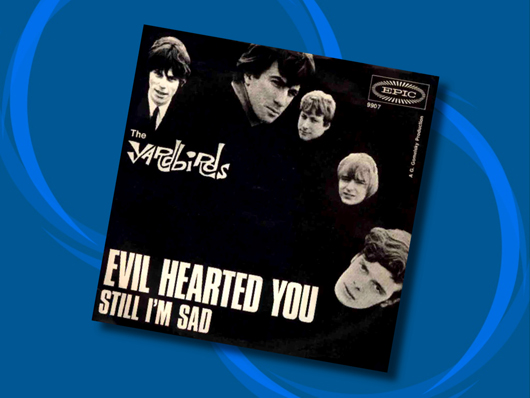
Jeff Beck
J is for... Jeff Beck
Guitarist Jeff Beck didn’t spend long in the ranks of The Yardbirds but he made a huge impression on his fellow guitar players. His playing on Evil Hearted You is especially brilliant. Highlights are the crushing power chord intro and the emotive slide solo. Listen to the uptempo middle section and you’ll hear a lightning fast rockabilly lick in the style of Cliff Gallup of Gene Vincent And His Blue Caps - Beck is a huge Gallup fan.
Beck performed Evil Hearted You live with The White Stripes in 2002. The Pixies also recorded the song with Spanish lyrics.
J is also for... Jump, Jive & Harmonize
That’s Jump, Jive & Harmonize by The Fleshtones. The song was originally recorded by legendary '60s Chicano band Thee Midniters. The Fleshtones were formed in New York in 1976 and have been playing garage rock ever since.
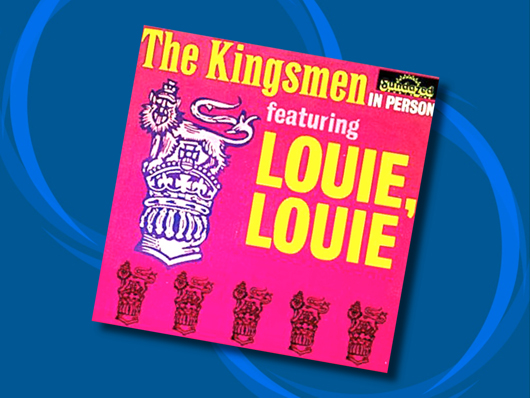
Kingsmen
K is for... Kingsmen
The Kingsmen didn’t write Louie Louie but their 1963 release is easily the best known version. The song, written by Richard Berry in 1955, influenced British bands like The Kinks and The Who and the garage bands that came to idolise them.
Ray Davies of The Kinks wrote You Really Got Me while he was trying to workout the chords to Louie Louie, while The Who's I Can’t Explain and Wild Thing by The Troggs are ‘informed’ by the riff. There are hundreds of other derivatives out there but the song’s influence on the 1966 garage classic Beg, Borrow And Steal by The Rare Breed (aka Ohio Express) is one of the most striking.
K is also for... Kick Out The Jams
If we had to pick one song that signified the shift from '60s garage rock (neatly bypassing the hippies) to proto-punk it would be Kick Out The Jams by the MC5. Swedish band The Hellacopters did a smoking version of ‘Jams too.
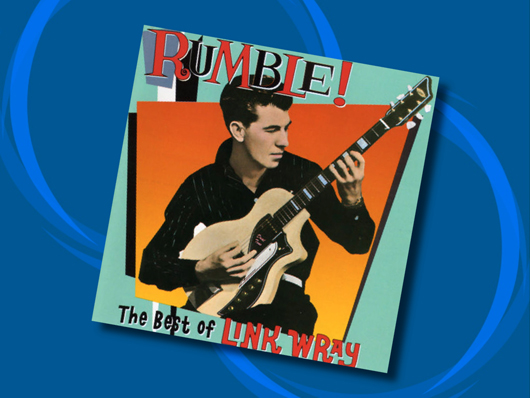
Link Wray
L is for... Link Wray
The godfather of garage rock, Frederick Lincoln ‘Link’ Wray Jr created a savage guitar sound in the late '50s when he poked holes in his amplifier’s speakers with a pencil. This wanton vandalism produced an early version of fuzz-tone, and in 1964 Dave Davies of The Kinks would use a razor blade to achieve a similar effect on You Really Got Me.
Wray's 1958 instrumental hit Rumble sounded so genuinely menacing that many US radio stations refused to playlist it. The record was a huge influence on guitarists like Jimmy Page and Pete Townshend of The Who. Jimi Hendrix and Marc Bolan of T Rex were big Wray fans too. Sadly the man himself passed on in 2005. Find out more about the legend perpetually wrapped in leather and dark shades here.
L is also for... Look
It’s rock ‘n’ roll. You have to look good. While many garage bands wore striped pants and Beatle mop top haircuts, the Count Five lads took their name literally and sported Dracula-style capes. Even that was tame compared to The Monks, who wore robes and short hairstyles with tonsures (the bald bit monk’s have on the top of their heads, natch). Amen to that.
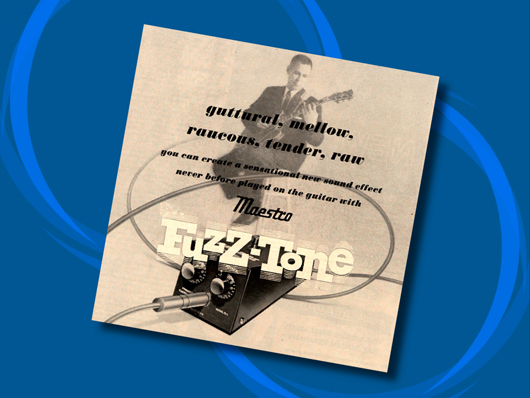
Maestro
M is for... Maestro
Believe it or not, the Maestro FZ-1 Fuzz Tone pedal, launched by Gibson in 1962, was originally designed to allow guitarists to simulate the sound of horn players. It didn't. Gibson was so sure that its little stomp box was going to sell big that they built 5000 to meet expected demand.
Dealers bought the stock but guitarists didn’t. It all looked bleak for the FZ-1 until 1965 Keith Richards used one on the opening riff of The Rolling Stones' (I Can’t Get No) Satisfaction. Thanks to the Human Riff, the FZ-1 began selling by the shedload to a new generation of garage band heroes.
M is also for... Mexico
There were some great garage bands doing their thing south of the border in the 1960s. For a kickoff there’s Matematicos (that’s Spanish for Mathematicians!) with Pregunto, their cover of I Need You by The Kinks. Even better is Los Chijua’s cracking Changing The Colors of Life from 1968.
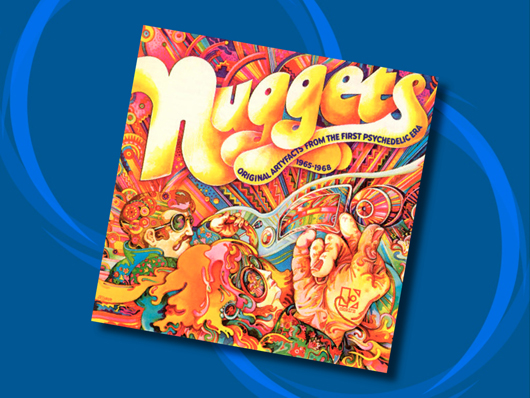
Nuggets
N is for... Nuggets
Released in 1972, Nuggets: Original Artyfacts From The First Psychedelic Era was a compilation of 27 garage rock tracks put together by guitarist Lenny Kaye (Patti Smith Group) and Elektra Records' big cheese, Jac Holzman. Featuring bands like The Standells, The Seeds, Count Five and Shadows Of Knight, Nuggets reignited interest in the '60s garage scene and inspired '70s punks.
In 1998, the original Nuggets album was pimped into a killer four-CD boxset with an additional 91 tracks and a book. We’ve got it and we're here to testify that it’s all gravy baby...
N is also for... Nathan Daniels
Nathan Daniels was the genius behind Danelectro guitars and basses. Thanks to a combination of low-cost materials and clever construction, Daniels put affordable, great sounding guitars into the hands of kids who couldn’t afford a Gibson or Fender. Legends like Jimmy Page and Eric Clapton loved them too. Check out the latest Danelectro range here.
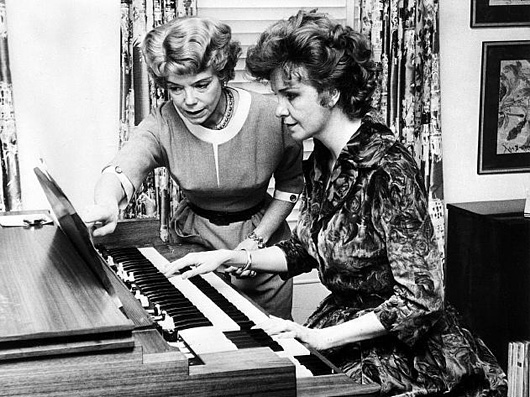
Organs
O is for... Organs
Organs were very big in the '60s. Er, maybe we should rephrase that. Ok, most garage bands had an organ player in their ranks. Some songs just wouldn’t work without one, 96 Tears by Question Mark & The Mysterians for example.
Popular organs used by garage groups included Vox Continentals, Farfisa Compacts and various Hammond and Lowrey models. The question of which band actually played what make and model of organ has been covered brilliantly at the keyboard-obsessed Combo Organ Discography website. Saves us trying to figure it out.
O is also for... Oh Yeah
Oh Yeah is a 1966 classic ditty released by Chicago garage royalty Shadows Of Knight. The song was written by Bo Diddley. Shadows of Knight also released a hit version of Van Morrison’s Gloria. The band are still going strong today. Check out their astonishing haircuts here.
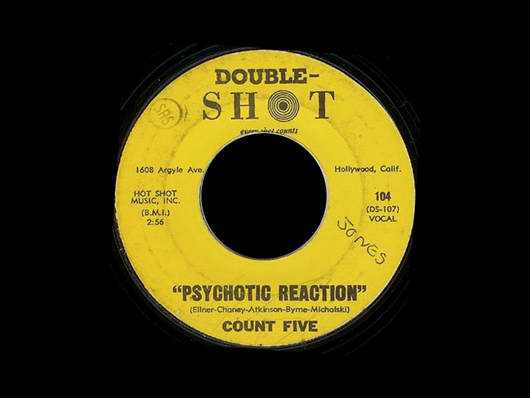
Psychotic Reaction
P is for... Psychotic Reaction
Neck on the line time. The 1966 Count Five classic Psychotic Reaction is the greatest garage rock track, like ever. From the gradual build of the intro to the freak-out guitar solos the song is perfectly formed, even if the cheeky Counts did borrow the guitar breaks from The Yardbird’s 1965 cover of Bo Diddley’s I’m A Man. We’ll let ‘em off.
Psychotic Reaction has been covered dozens of times over the years. The two best covers are by Tom Petty And The Heartbreakers and The Cramps.
P is also for... Pawnshop prizes
The term pawnshop prize usually refers to an old-but-good guitar from the '50s or '60s that you pick up for a song. Maybe a beat up old Teisco or if you’re really lucky, a student model Gretsch, Danelectro or something. You just have to find one. So keep ‘em peeled. Of course, you could just buy an Eastwood or Italia instead.
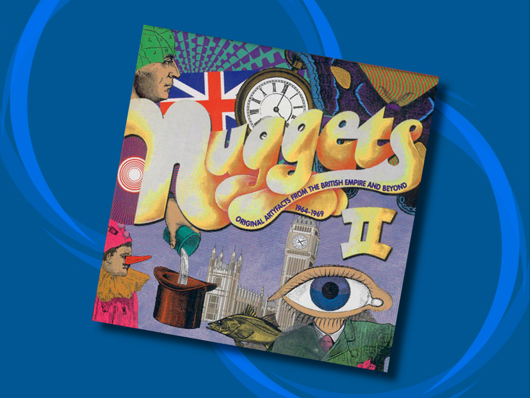
Quintessential
Q is for... Quintessential
For a start do yourself a solid and buy the Nuggets boxset (see ‘N’). You’ll have over 100 of the best garage tracks ever. Once you’ve gone through that there’s Nuggets II: Original Artyfacts From The British Empire and Beyond, which gives the, mainly, British side to the story.
If you want to get a bit more obscure check out the Pebbles series. There are a few to choose from. The sound quality isn’t quite up to Nuggets standards but then hi-fidelity isn’t what garage rock is about.
Q is also for... Quiver
Quiver is a smoking garage track by Singaporean group The Trailers. The band also score big for their spy guitar meets garage version of Thunderball, from the James Bond movie of the same name.
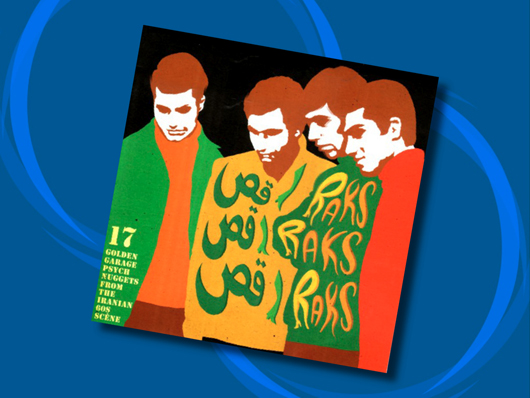
Raks Raks Raks
R is for... Raks Raks Raks
Raks Raks Raks is a song by '60s Iranian garage rock band Moha Jamin. It seems that, like just about every other country in the world, garage rock was all the rage in Iran. Moha Jamin were one of the best bands in a scene that included The Littles and Shabah.
If you can find a copy, compilation album Raks Raks Raks features 17 prime Iranian garage cuts. Piccadilly Records offer albums by Iranian garage bands The Rebels and The Golden Ring.
R is also for... Rickenbacker
Thanks in part to Beatles John Lennon and George Harrison and their beautiful Rickenbacker guitars (325 and 360-12 models respectively) garage band axe slingers with a bit of dough usually plumped for a Ricky. They’re still out of our reach but hey, there’s no harm in looking.
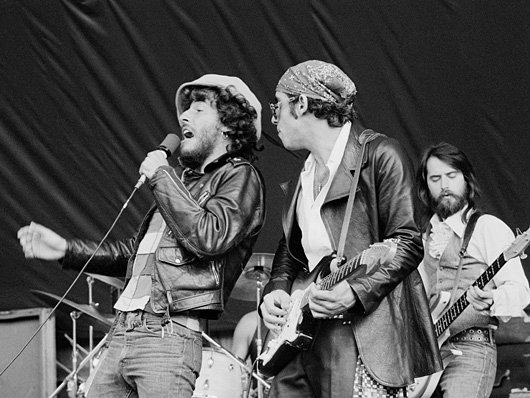
Steven Van Zandt
S is for... Steven Van Zandt
We’re talking about Bruce Springsteen’s E Street Band, er, band mate. The guy in the bandana who played Silvio Dante in The Sopranos. Yeah, that’s him. Well, Little Steven, as he’s known, is a garage rock expert and obsessive with his own radio show dedicated to great rock ‘n’ roll.
He plays vintage and modern garage sounds and whatever else he’s getting off on at any particular time. Steven is also about to relaunch his Fuzztopia website which will apparently serve as resource for bands to promote themselves. That’s all we know for now.
S is also for... Steppin’ Stone
Love The Monkees, or hate ‘em, their version of (I'm Not Your) Steppin' Stone comes over like a killer garage punk track. The performance is actually quite malevolent for a '60s pop band. Well, we like it. Here’s the Sex Pistols' version for all you unbelievers.
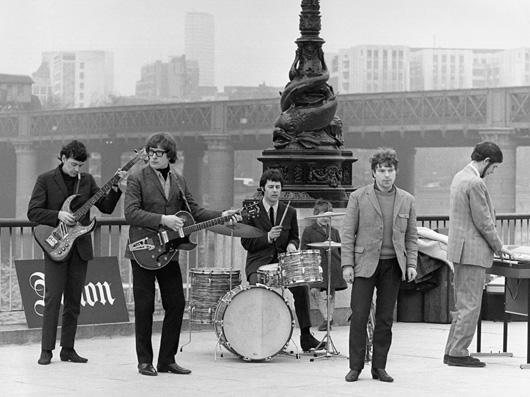
Them
T is for... Them
Formed in 1964, Them was an Irish band that featured grumpy genius Van Morrison on lead vocals and harmonica. It was while with the band that Van wrote the classic Gloria, a song covered by hundreds of garage bands and just about everyone else.
Amazingly the song was relegated to the B-side of the band’s 1964 single Baby Please Don’t Go. In garage land, Gloria was most famously covered by The Shadows of Knight. The 1967 Blues Magoos version is more experimental. Van the Man’s original version of the song is still the best, no question.
T is also for... The Thanes
The Thanes are a Scottish garage punk band formed in Edinburgh in 1986. Part of the '80s garage revival, the band released a great 27-track retrospective in 2004 called Evolver. If you’re expecting The Proclaimers with fuzz boxes, you’re way off pal.
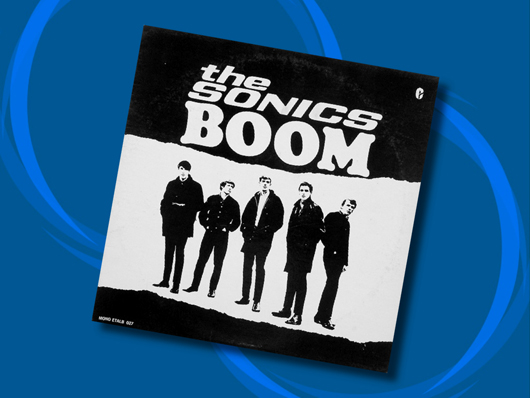
Unhinged!
U is for... Unhinged!
Few garage bands sounded as genuinely unhinged as The Sonics. Formed in Tacoma, Washington in 1960 the band took no prisoners on their cover of Louie Louie and the brilliant Strychnine. Just try not to shake your arse along with Shot Down, too. You can find out more about the band at their fansite.
The Sonics weren’t the only fuzz-driven mentalists. '90s garage band The Mummies wrapped themselves in bandages and tore the hell out of tunes like What A Way To Die and The Fly. Now that’s a show!
U is also for... Unrelated Segments
Odd name aside, The Unrelated Segments were a cracking little garage outfit from Taylor, Michigan. The band’s best moment came with the release of The Story of My Life in 1967. It helped them bag support slots with The Who and the MC5.
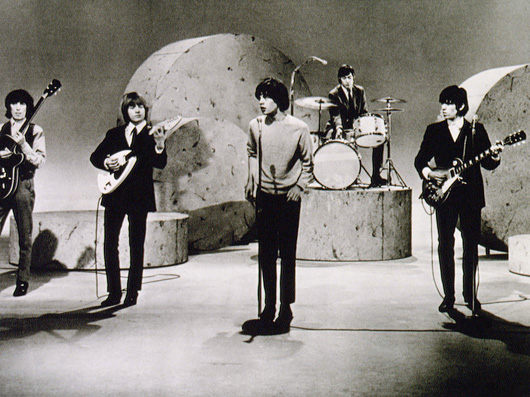
Vox
V is for... Vox
Vox guitars and amplifiers became objects of desire among garage bands in the '60s. That’s mainly because of who was playing them. Brian Jones of The Rolling Stones famously played a white Vox Mark VI ‘Teardrop’ guitar and The Beatles used Vox amps exclusively on the road.
There are some great vintage Vox related pics, and plenty of info, at the Vox showroom website. If you prefer your Vox gear with a bit less mileage on the clock then visit www.voxamps.com to see the latest range of amps, guitars and effects.
V is also for... Velvet Haze
This bonkers slab by Virginian band Velvet Haze has the filthiest fuzz-tone you’ll ever hear! It sounds like a fuzz box running thorough a busted speaker. We’re not sure if we like it! See what you think.
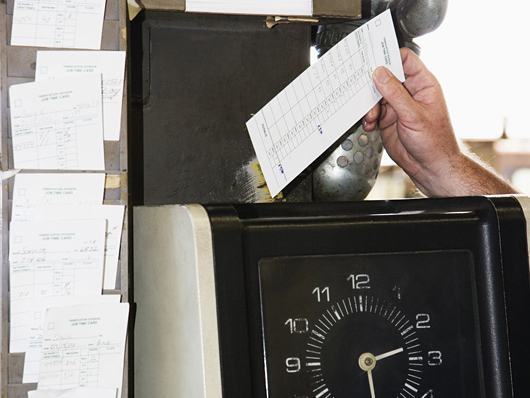
Work
W is for... Work
That’s work as in proper day jobs. As great as many of the world’s garage bands were many of them didn’t survive past a few single releases and a tour. The problem was that only a few wrote their own songs.
As Mick and Keith of The Stones discovered, at some point you need to write your own material if you want to build a career in rock ‘n’ roll. Some artists did emerge from the garage scene to achieve greater success. John Fogerty’s band The Golliwogs (yes, really) became Creedence Clearwater Revival. Guitarist Ted Nugent left The Amboy Dukes for a successful solo career, in-between acting and chasing animals with a bow and arrow.
W is also for... Ward 81
Ward 81 is a 1983 single by garage legends The Fuzztones. Led by singer/guitarist Rudi Protrudi, the band was formed in 1981 and have pumped out great organ and fuzz-driven rock ever since. The Fuzztones have a fan site called The Cult of Fuzz.
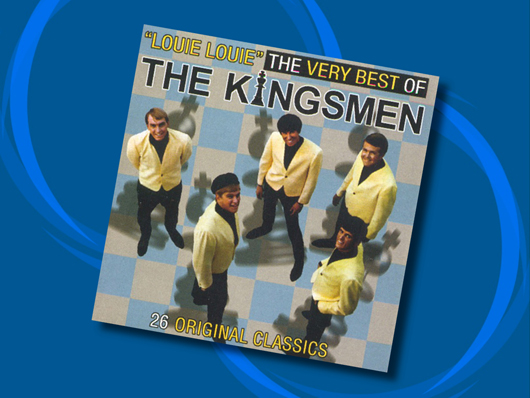
X-Rated
X is for... X-Rated
Ok, don’t get excited. There wasn’t actually any real filth to speak of in the garage scene although we can’t vouch for the foreign language stuff. We know that Link Wray’s Rumble was banned from radio despite the fact that it had no vocal.
Well, a similar fate befell The Kingsmen and their hit Louie Louie. Banned by the governor of Indiana for supposedly having obscene lyrics, the band and its song were investigated by the FBI. The heat was called off when it was discovered that the lyrics were not obscene. Of course, all the negative press helped the song’s popularity.
X is also for... X-Cellents
The X-Cellents were a garage group from Dayton, Ohio that released some great R&B-tinged records then vanished without trace like so many other bands of the mid-'60s. Shame cos tracks like Little Wooden House were damn good.
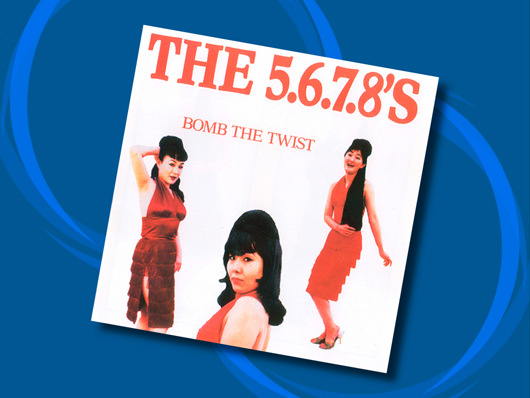
Yoshiko 'Ronnie' Fujiyama
Y is for... Yoshiko ‘Ronnie’ Fujiyama
Ronnie Fujiyama is the lead vocalist and guitarist of Japanese garage rock trio The 5.6.7.8's. Everyone knows the band from their appearance in Quentin Tarantino’s 2003 kung-fu revenge flick Kill Bill Volume One where they performed I Walk Like Jayne Mansfield and Woo Hoo.
The band was formed in Tokyo back in 1986. Ronnie plays the hell out of a '60s Japanese Teisco EP-1L model hollowbody guitar with a single neck pickup and a Bigsby-esque vibrato. You can get more info on Teisco instruments at the Teisco Del Rey Twanger’s Paradise.
Y is also for... You Got Good Taste
You Got Good Taste is a series of podcasts by ‘Mr A The Barber’ billed as rock ‘n’ roll for weirdos. A brilliant mix of garage rock, rockabilly, surf and more, the series can be downloaded from the Garage Punk Hideout podcast network and at Podomatic. It’s sick... but in a good way!
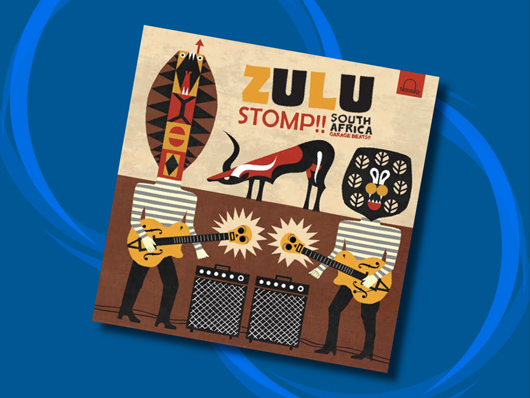
Zulu
Z is for... Zulu
Zulu Stomp!! South Africa Garage Beats!! is, as the name suggests, a compilation of tracks from the SA garage scene of the '60s. The album will be available by the time you read this... it’s imminent. It features tracks by a veritable smorgasbord of South African talent.
Although The A-Cads and The Invaders are featured on the album, the following tracks aren’t. Check out Hungry For Love by The A-Cads and The Invaders rocking through No Money No Honey anyway. You might like them.
Z is also for... The Zephyrs
Ah... who could forget The Zephyrs? Ok, we’ve never heard of them either but they turned up while we searching for another track. That’s what happens when you go digging through treasure. Anyway, here’s There’s Something About You, a nice slice of '60s pop with a garage edge.
Liked this? Now read the A-Z of the blues
Connect with MusicRadar: via Twitter, Facebook and YouTube
Get MusicRadar straight to your inbox: Sign up for the free weekly newsletter









